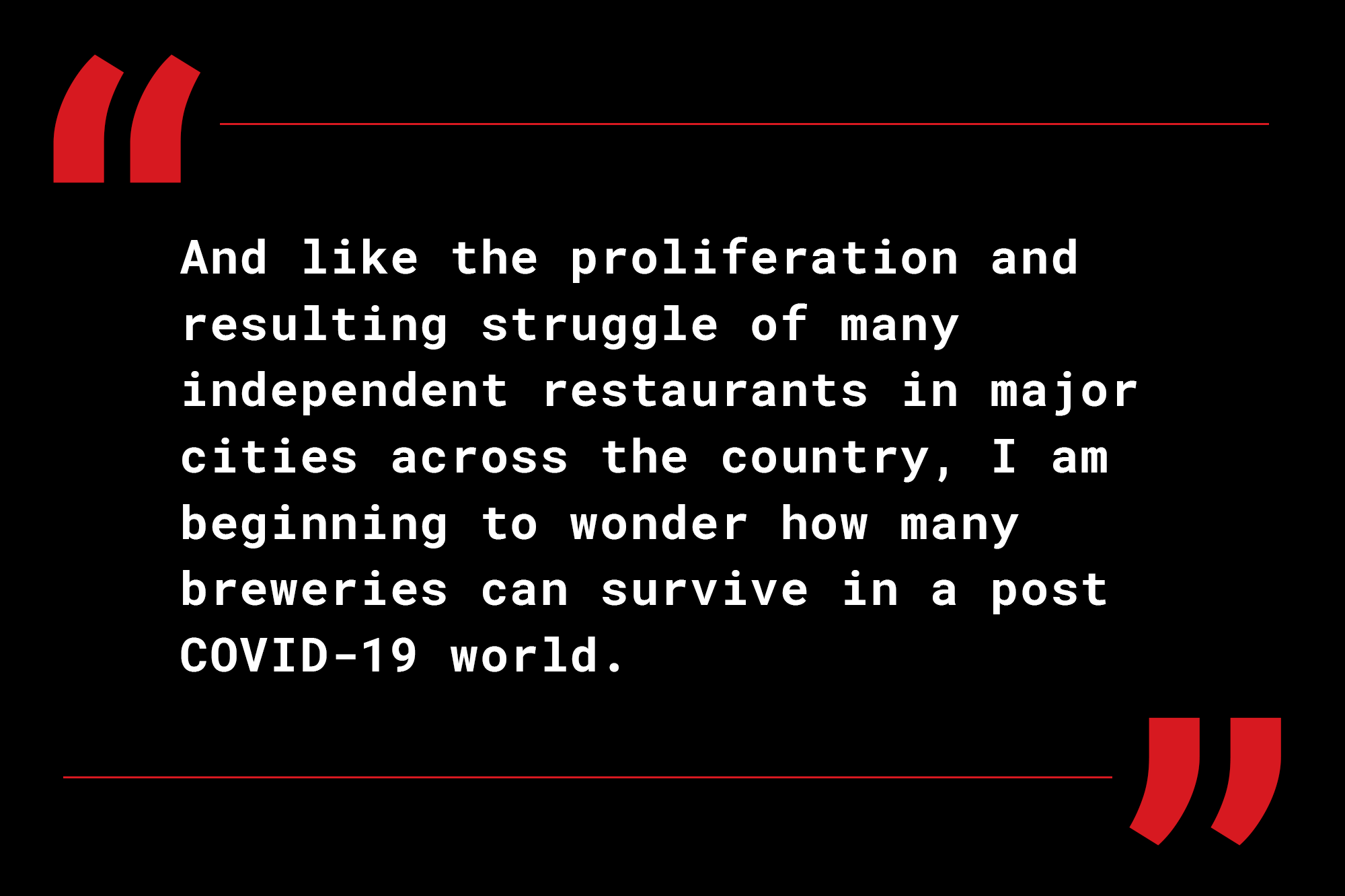The Brewery (R)Evolution
My earliest foray into craft beer started in college in the early 2000’s with the book Brewing Up a Business by Sam Calagione, the Founder of Dogfish Head Brewery. The book romanticized the hustle and bustle of brewery life with the grit, determination and creativity it took to build a strong business/brand. I’ve always wanted to make the pilgrimage to Rehoboth Beach, Delaware and have a pint at the Dogfish Head brewpub. When it launched in 1995, it was the smallest commercial brewery in the United States with only a couple 10-gallon batches a day – the beer had to stand out! Think Hill Farmstead, Lawson’s and the Alchemist in their early days. The Dogfish Head brewpub became the home of continuous hopping (Google it) and constant experimentation with new hoppy brews churned out regularly and only available on premises. Sam Calagione and his team were inspired by early craft beer pioneers like Sam Adams, Geary’s, Anchor, Sierra Nevada and others, which undoubtedly paved the way for the craft beer revolution of today with 200+ breweries in operation across the Commonwealth. And like the proliferation and resulting struggle of many independent restaurants in major cities across the country, I am beginning to wonder how many breweries can survive in a post COVID-19 world.
Following the Great Recession, a major building boom in Boston added millions of square feet of retail real estate to the market. And with it, a growing demand from developers and investors to set their projects apart by adding the most desirable, local, independent restaurant on the ground floor. Inherently, these businesses added visibility/identity for the project, offered residents or workers above more authentic options experience and created value for the property owners. This trend became so popular, it became incredibly hard and expensive to put these types of deals together. It also resulted in a saturated F&B market that required extraordinary, and some would argue, the new normal for restaurant deals with large TIA’s and % rent heavy rents. This type of structure resulted in more of a partnership between landlords and tenants that offset many of the challenges the F&B industry continues to face today with outrageous construction costs, rising labor costs, competition for staff, etc. In my opinion, these types of partnership and clear alignment of success are more likely to survive the type of crisis were into today. With that in mind, the pressures on full-service restaurants, ultimately, resulted in Landlord’s starting to explore alternative anchors for their projects. This is where small-batch breweries with often expansive and programmed taprooms enter the conversation.
The traditional brewery (many with only tasting rooms) used to exist on the margins, occupying cheap real estate with a loyal customer base that would drive hours for their favorite beer. Only in the past five years or so, breweries have begun to replace or compliment restaurants on the ground floor of mixed-use projects within the City limits. Brewers capitalizing on these opportunities are customarily more established and looking for a way to get closer to their consumers as field trips to their larger facilities slow. Tangent: COVID-19 has reinvigorated these pilgrimages for many parents looking to get out of the house for a field trip to their favorite brewery…you know who you are! The more urban brewery setup includes small-batch, onsite brewing leveraging the Farmer Brewery License, limited food menus, special release beers and larger taprooms (i.e. seating of 5,000-10,000 sf) with capacity for programs and events. In recent year, these urban breweries have also been trending smaller (i.e. 1,500-5,000 sf) with brewers not relying on these spaces to produce beer; it’s a more manageable and profitable operation. The larger taprooms are more complex, require a dining experience, entertainment and robust programming to maintain the energy and financial aptitude.
In my opinion, the more established and reputable breweries will survive and thrive post COVID-19 with a new appreciation for online content, direct-to-consumer logistics and delivery services. People will slowly go back to urban breweries over time with less choice, at least initially, as some don’t survive this crisis. In the short-term, consumers will savor their trips to their favorite breweries to pick-up beer orders while urban breweries deal with the inevitable challenge of reduced occupancy. Eventually, I see breweries occupying the proverbial “third place” once again with regular gatherings, programs and events that draw crowds. Landlords will continue to seek out breweries for their projects, but like restaurants, the paradigm as it relates to the transactional nature of these deals, may be forever changed.
- Alchemist
- Anchor
- COVID-19
- Dave Downing
- Dogfish Head Brewery
- Geary’s
- HIll Farmstead
- Lawson's
- Sam Adams
- Sam Calagione
- Sierra Nevada




